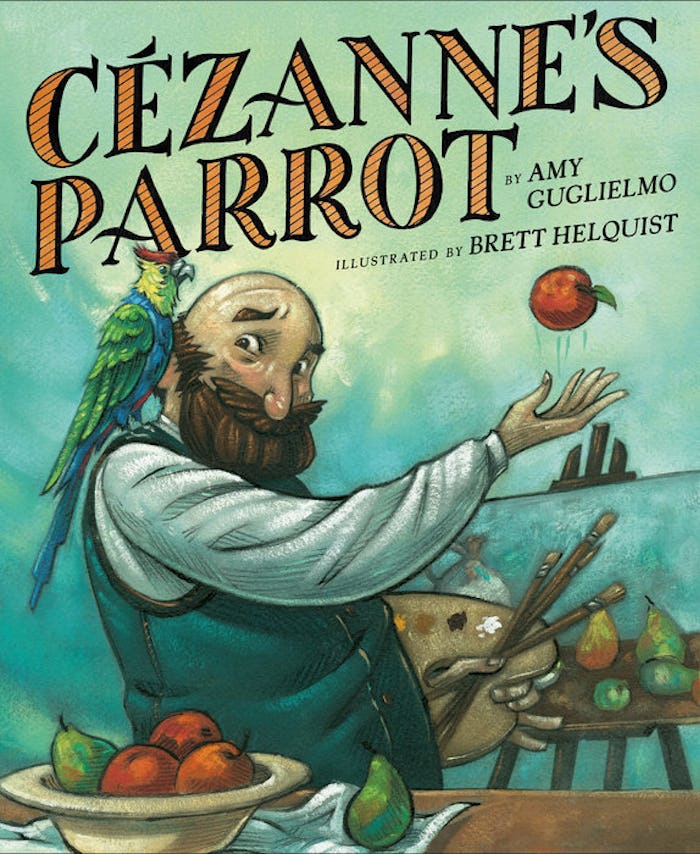Life

This Picture Book Is Perfect For Young Artists
I have a young artist in my house, age 4, who does not care for any suggestions I might offer about what she is painting. She allowed me to show her how to do a watercolor wash one day, and has run with that, doing rainbows and sunsets and foggy hearts, but on her terms. She is a painter in the truest sense, creating on paper whatever is in her head, and set on being a "great artist" (her words.) She is also a perfectionist, frustrated when the paint runs or her letters are malformed, so I've been giving her books that widen her ideas about how art should look — Dr. Seuss's Horse Museum; Parker Looks Up, about Amy Sherald's portrait of Michelle Obama; Frida Kahlo (Little People, Big Dreams); a big book of Georgia O'Keeffe's watercolors. And, recently, Cezanne's Parrot (G. Putnam's Books For Young Readers), by Amy Guglielmo, and illustrated by Brett Helquist, about the painter's slow road to fame.
"While Monet could paint quickly, finishing a painting in a single day," the narrator explains, "[Paul] Cézanne was painstakingly slow." He is obscure among his fellow Impressionists — lacking in validation, he asks his parrot Bisou to tell him he is a great painter. Over and over again the bird snubs him.
Cezanne's is a story of frustration: he throws paintings into the fire; flowers wilt before he can finish painting them, so slow is his technique; professors deem his work too crude, too messy; critics are indifferent.
He continues to try to create something truly worthy, forgoing sleep to paint all night, and asking a friend to sit for a portrait. The friend "sat for a single portrait over one hundred fifty times, until one day he didn't come back."
Bisou refuses to tell Cézanne is a great painter until one morning he is able to fly out of his cage. The bird lands on the easel and announces, "Cézanne is a great painter!" It results in a sale. The painter is buoyed. "I will astonish Paris with an apple!" he announces.
And of course he does.
I often assume that getting out the art supplies will quiet my kids, distract them and buy me some time, forgetting how frustrated I got as a child when my horse looked too much like a dog, or the picture failed to have the right mood. I forget that each time you open that palette, it's a challenge, an act of problem-solving, occasionally an insult to your rudimentary skills.
Cézanne really did have a pet parrot that he taught to praise him, and he really did have to use wax fruit so the still life didn't spoil while he painted it. The lessons of his life are not lost on me — it is easier to do what everyone else is doing than agonize over a pile of oranges for years on end. Those doing something new, or "ahead of their time," can be hard to appreciate.
Likewise, when I look at my children, I don't see them as a work in progress as much as I see them in the moment — this height, this range of vocabulary. I sometimes forget the great distance they go in the course of their little lives.
There is beauty in the process, this clever book teaches the reader. You may want to throw it all in the fire, but that's the price of becoming a master.
Also, don't listen to the birds.
Cezanne's Parrot is out now from G. Putnam Son's Books for Young Readers.
This article was originally published on